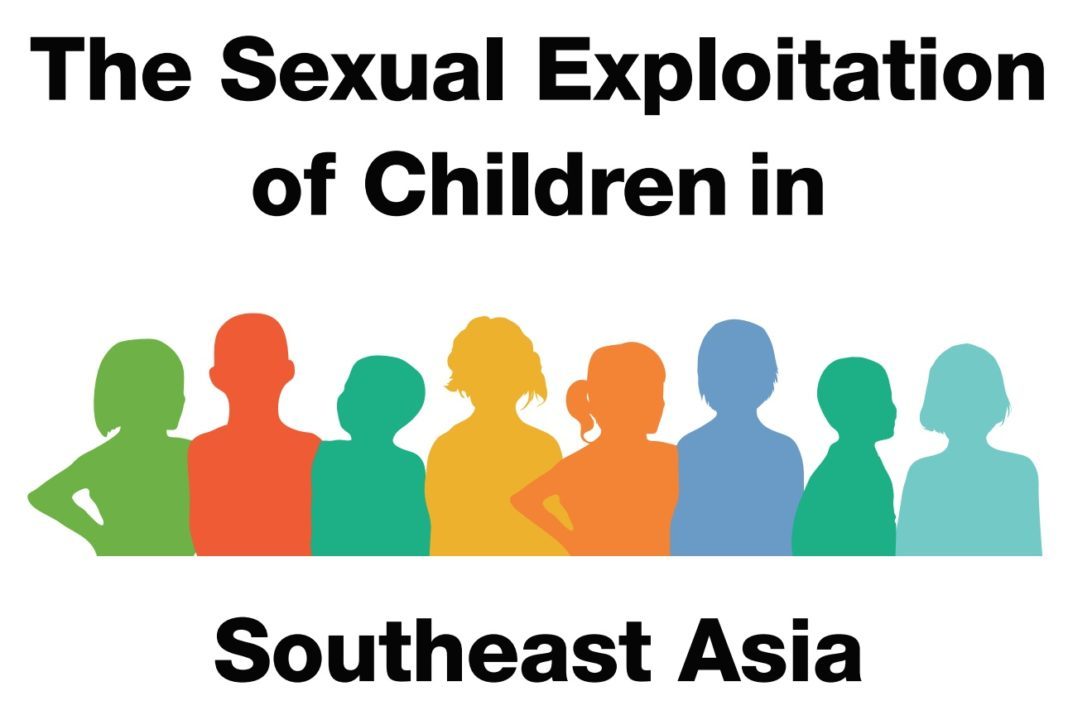Tourists rape children in Brunei Darussalam, Cambodia, Indonesia, Lao PDR, Malaysia, Myanmar, the Philippines, Singapore, Thailand and VietNam, it’s a sad reality of the global travel and tourism industry. Silence it not an option.
Outdated laws and weak legal enforcement are increasing the risk of the sexual exploitation of children across Southeast Asia says a new report.
Traditional elements of the sexual exploitation of children, such as child marriage and human trafficking continue to be an issue, says NGO ECPAT International’s “The Sexual Exploitation of Children in Southeast Asia,” which explores the phenomena in 11 countries in the region. However, the report says that this has been aggravated in recent years by a low level of awareness about the issue, along with increased regional tourism and the proliferation of the internet
“The rapid growth in tourism exacerbates the sexual exploitation of children in the region,” says the study. “Further exacerbating the situation has been the dramatic development in Internet and communications technologies, which have increased and diversified opportunities to sexually exploit children, or to profit from the sexual exploitation of children.”
ECPAT says that underlying these risk factors is a weak legal infrastructure in many Southeast Asian countries, which is allowing offenders to act with impunity. And it is not just foreigners who are to blame, perpetrators today are largely from the region. “Although tourists from Western countries are still a significant problem, it is a popular misconception that they constitute the majority of child sex offenders,” says Rangsima Deesawade, ECPAT’s Regional Coordinator for Southeast Asia. “Most offences in Southeast Asia are committed by nationals of countries in the region or other parts of Asia.”
According to the new study, whilst traditional tourism destinations such as Thailand and the Philippines continue to pose a threat to children, due to cheap travel and accommodation options, other countries such as Cambodia, Indonesia, Myanmar and Viet Nam have become popular hotpots for child sex offenders.
The report also highlights the increasing danger posed by expanding access to the Internet, which it says is imperiling children and placing them at greater risk of abuse and exploitation. It claims that the production of online child sexual abuse material in the Philippines now generates up to US$1 billion of annual revenue; some countries in the region have been identified as major hosts of child sexual abuse images; and in Lao PDR, some CD shops openly sell child sexual abuse material.
“The threat of online sexual abuse is something faced by children around the world,” says Deesawade. “And as Southeast Asia becomes increasingly connected, it becomes more connected to this global problem.”
Other facts/leads highlighted by the report include:
- There are still large gaps in the understanding of the sexual exploitation of children in the region. Much more research is needed;
- Patterns of offending are different between travelers from different countries. For example, Asian men are more likely to sexually abuse young girls, including very young virgin girls, while Western offenders are more likely than Asian nationals to approach young boys for the purpose of sexual exploitation.
- Child sex offenders are increasingly seeking out children through voluntary or professional positions, such as by finding employment or volunteer opportunities in schools, orphanages, and in NGOs;
- In Cebu City in the Philippines, one of the poorest areas in the country, 25 percent of all sex workers on the streets are sexually exploited children;
- In a survey of street working boys in Sihanoukville, Cambodia, 26 percent of respondents indicated that they had engaged in sexual activities with adults in exchange for money, food or other gains and benefits;
- Temporary marriages are increasing in Indonesia. With Indonesian girls being forced into marriage, these so called ‘mutah marriages’, provide opportunities for foreign men, mostly from the Middle East, to sexually exploit children. Child trafficking is on the rise in order to supply to this demand; and
- Girls and boys aged 12 and even younger are taken to Thailand to engage in commercial sex work. It is believed that some parents have sold their children directly into the sex industry, while in other cases children are initially recruited to work in the agricultural sector, as domestic workers or for other industries but they are then trafficked into Thailand’s sex industry.
The Sexual Exploitation of Children in Southeast Asia is a desk review of literature from 12 Southeast Asian countries (Brunei Darussalam, Cambodia, Indonesia, Lao PDR, Malaysia, Myanmar, the Philippines, Singapore, Thailand and Viet Nam). It highlights several concerning developments in the rise of sexual exploitation that is occurring across the region.
For full report: http://www.ecpat.org/wp-content/uploads/2018/02/Regional-Overview_Southeast-Asia.pdf
About ECPAT
ECPAT International is a global network of organizations dedicated to ending the sexual exploitation of children. With 103 members in 93 countries, ECPAT focuses on the trafficking of children for sexual purposes; the exploitation of children through prostitution and pornography; online child sexual exploitation; and the sexual exploitation of children in the travel and tourism sector. The ECPAT International Secretariat is based in Bangkok Thailand.






